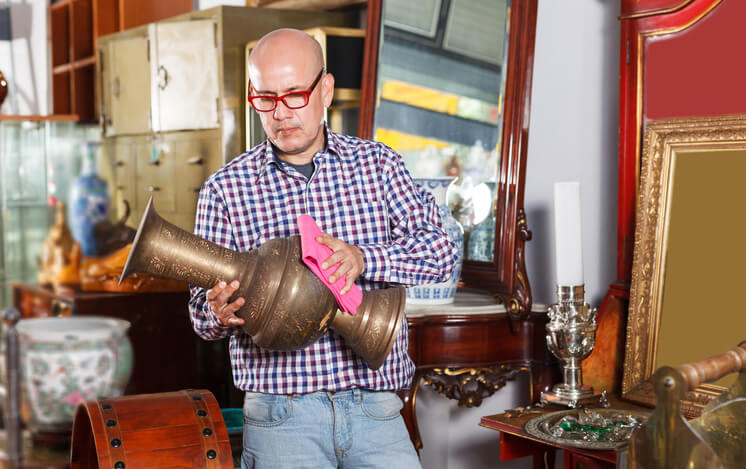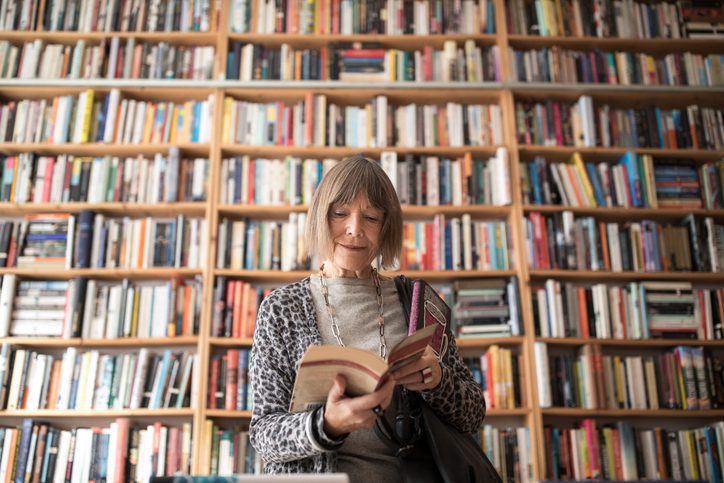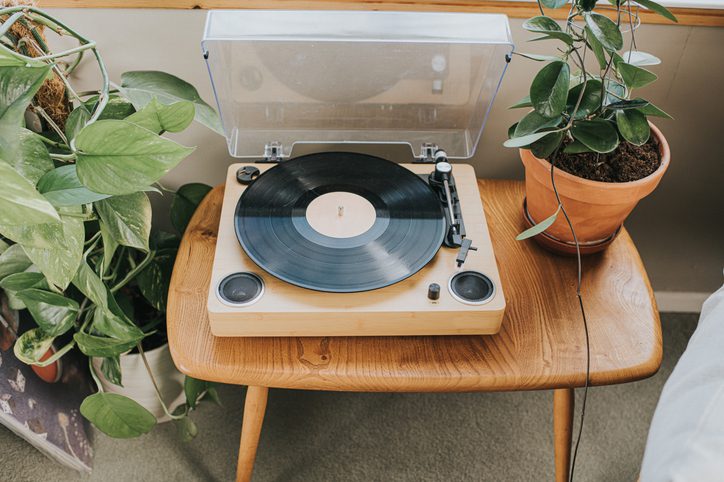Antiquing today may offer some of the most attractive buying opportunities the industry has seen for decades. There are thousands of antiques and vintage shops, malls and shows across the nation, but many high-quality artifacts have fallen out of favor among collectors and decorators, which has led to drastic decreases in their market prices. Art market website Artnet, for example, reports an eight-piece set of George III dining chairs, once valued at $8,000, selling for less than $500 today.
Still, as antique furniture prices fall to a more accessible level, the market for these one-of-a-kind pieces has started to attract a new, younger customer base. Sustainability-minded millennials may often be minimalists, but they’re also often interested in reusing and repurposing existing artifacts, instead of buying new, mass-produced pieces.
In just a few years we may look back at the current buyer’s market for antiques and collectibles, combined with a burgeoning interest by the millennial cohort, as one of the most promising opportunities in antiques history. This may be true not only for professional collectors—who may be able to buy antiques low and sell high—but also for hobbyists and decorators, who now have the opportunity to pick up home-use pieces at some of the lowest prices in recent decades.
How to Start Selling Antiques
The average antiques dealer brings in about $45,000 per year, according to Job Monkey, a site that specializes in nontraditional career opportunities. While antiquing probably won’t make you rich, it can be a rewarding way to bring in an income while working within an industry you love.
Antiques dealers typically sell their wares via one of three mediums: a brick-and-mortar shop, online or at antique shows and malls.
Selling Antiques at a Brick-And-Mortar Location
A permanent storefront gives dealers the opportunity to create a memorable shopping experience, but it also increases overhead costs. A rent or mortgage payment increases the amount a dealer will have to make each month, just to break even. Still, in an area with high foot traffic and an interested client base, a physical location can give shoppers the chance to see your antiques in person, which can greatly increase sales potential.
Selling Antiques Online
Selling via an online portal like Ruby Lane, eBay, or 1stdibs allows a dealer to cast a wider net—pretty much anyone in the world interested in a particular item can bid or buy online (assuming they’re willing to pay to ship the item across the country or internationally). You’ll likely need a warehouse or other large space to store your wares, but the overhead on a space that doesn’t regularly entertain customers can be substantially less than for a permanent storefront.
At the same time, selling online allows less opportunity to create a brand for your business; buyers are less likely to remember the name of their dealer and more likely to remember the name of the platform they used to browse merchandise. Still, the most effective online sellers take excellent photos and write accurate, detailed product descriptions.
If you’re interested in generating a side business based on antiques and other items you already own, or restoring antiques, the online portals can get you up and running very quickly.
Antique Road Shows and Malls
Selling at a mobile antique show or fair can increase the number of buyers who can see your merchandise in person, but it’s also a time-consuming endeavor for a dealer. You’ll have to move your merchandise from one location to the next and have a place to store your antiques between shows. A middle ground is to secure a permanent location in an established antiques mall, where dealers rent stall space for a predetermined time period.
Combining Venues
Even if you own or rent a storefront, there’s no reason you can’t also travel with road shows or sell your antiques online. “It helps to have a place people can come to browse and check out potential buys, but 85% of my sales happen on [online] platforms,” says John Linden, Los Angeles-based interior and furniture designer at online storefront MirrorCoop, which curates vintage, mid-century and art deco furniture. “Even my friends who run physical shops do most of their business online.”
Antiques and Finding the Future Trend
In general, antiques are rare items older than 100 years. An item older than 50 years but not quite 100 is considered a collectible. Collectibles can sometimes have considerable value but, when looking to turn a profit, it can pay to know the difference between the categories.
The savviest antiques dealers learn to identify in-demand items—sometimes even before they’re in demand—and then buy them below market value, later selling them for a profit.
While it’s not always possible to predict future trends, collectors and dealers are aware of the 100-year cycle antiques follow. For example, 1920s era artifacts are the newest category of collectibles to reach the antiques threshold, which could enhance interest (and prices). Items created in an era of a milestone anniversary also garner interest: the 100th anniversary of an historical event, for example.
To really start turning a profit, you’ll want to get ahead of the next revival, so you’re able to participate when shoppers stop searching for the current craze (mid-century, modern collectible furniture) and start looking for whatever will be trending next.
Finding Antiques Worth Money
When starting out, “you should try to find a specialty,” says Linden. “I have a good hand in the mid-century modern mirror market, so people come to me for those.” If you’re known for a particular type of antique or collectible and you have a reputation for quality goods, people will know to come to you for certain needs. “You can branch out later on. but specializing will help you get your footing and stay afloat while you learn the business,” he adds.
Those who specialize can get intimate with a particular type of antique or time period, which can offer an advantage when scouring yard sales, thrift stores, or consignment shops for a special antique piece, where a discerning eye can pick out an underpriced diamond in the rough.
To get familiar with your favored slice of the antiques market, start reading up on your desired specialty. Kovels’ Antiques and Collectibles Price Guide is a compilation of 16,000 current antiques prices along with tips for recognizing authentic pieces, like the identification of particular logos, marks or indications of craftsmanship.
The Picker’s Bible: How to Pick Antiques Like the Pros is an older book but shares still-relevant advice about how and where to hunt for hidden antique treasures, how to negotiate antique prices and how to know when to walk away.
Online forums, like Kovels and Antiquers, can help you get to know the players within your desired market, ask questions and find out which antiques and collectibles are selling now.
Once you start finding pieces, you can check out online antique malls like The Internet Antique Shop or Ruby Lane for similar pieces, to gauge buyer interest, and identify potential sales prices.
Through these forums, and by getting to know the professionals in your geographic area, you can establish a network of specialists who can work together to refer clients to the most appropriate antiques dealer. “People will say, ‘Oh, you’re looking for a mirror from the ’50s? You should call my buddy John,'” says Linden. “And I do the same for them.”
Getting Started as an Antiques Professional
Antiques today are selling for less than dealers have seen for decades. If you love the industry and have the cash flow—and storage space—to get started, now may be the best time in recent history to pick up bargain antiques that could be sold for profit later.
Antiquing spans the globe, yet it’s a tight-knit network of professionals who often attend the same trade and road shows. Take the time to get to know the business, including experienced professionals in your desired specialty, and you could wind up with a network of experts who can help ease your way into your new venture.







I have a 1920 cast iron parrot door stop. There is actually a pair that I have seen being stopper could you tell me if there a market for that or what it would be worth. Please
hi dear Its Talakoob from Iran i want to sell an antique painting that comes from about 100years ago.
pleas keep in touch with me if you want to know any more details.
best regatds.
A consignment shop is another way to sell your antique wares. They may take 35% commission but the rest is your profit. If you know your specialty, garage sales and thrift shops are the best way to buy low. If you’re not into selling online, selling from home to specific buyers interested in your item thru the mail is another way. For example, you could order a book like Tony Hyman’s “Trash to Treasure” or his later list of buyers by category and deal directly with the buyer(s) that want your item via phone or mail. Don’t forget t take good pictures and write good descriptions including condition. Finally, if you have an item of gold or silver you want to sell, and its appraisal isn’t much higher than its scrap value, sell it to a precious metal refinery, not a coin dealer, jeweler or pawn shop to get your honest price. Your dentist will point you to a reputable refiner he or she uses.
I have some wonderful furniture of my Mother’s, some silver plate but very quality pieces, some valuable accessories and paintings. I would love to find and avenue to sell them.
Collecting alabaster,some mirrors, coins and small collectibles
I got a Polaroid lighten dàrken Land camera model j66
I have antiques around 2 3 thousand years old antiques stone used by stone age people
I’m a huge fan of the platform Transferantique. You pay a yearly subscription and buy & sell without any commission! They also post my items on social media to get more fuzz on our business. Very nice people and support team as well.
Are antiques good to sell at well marketed live auctions?
I have a 200 yeers old antiques
I have many antique items like
Made in Italy fans more then 100 years old, old sarees with 100% pure silver , 200 years sanduks, antique dushala’s , old mirrors etc…
How to deal/sell antiques ,,any information about it..
Its the postage too expensive to ship greetings from Malta